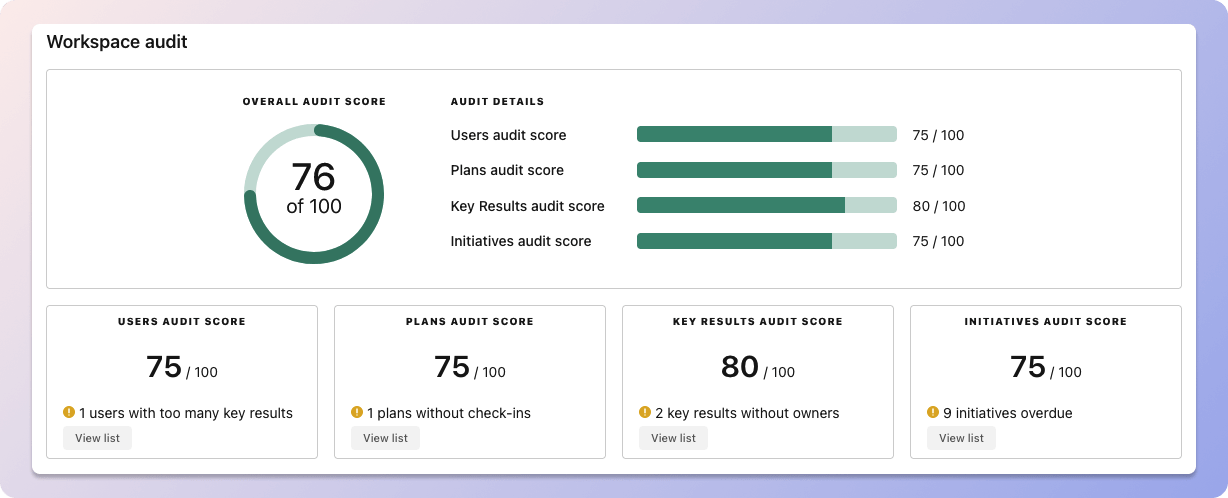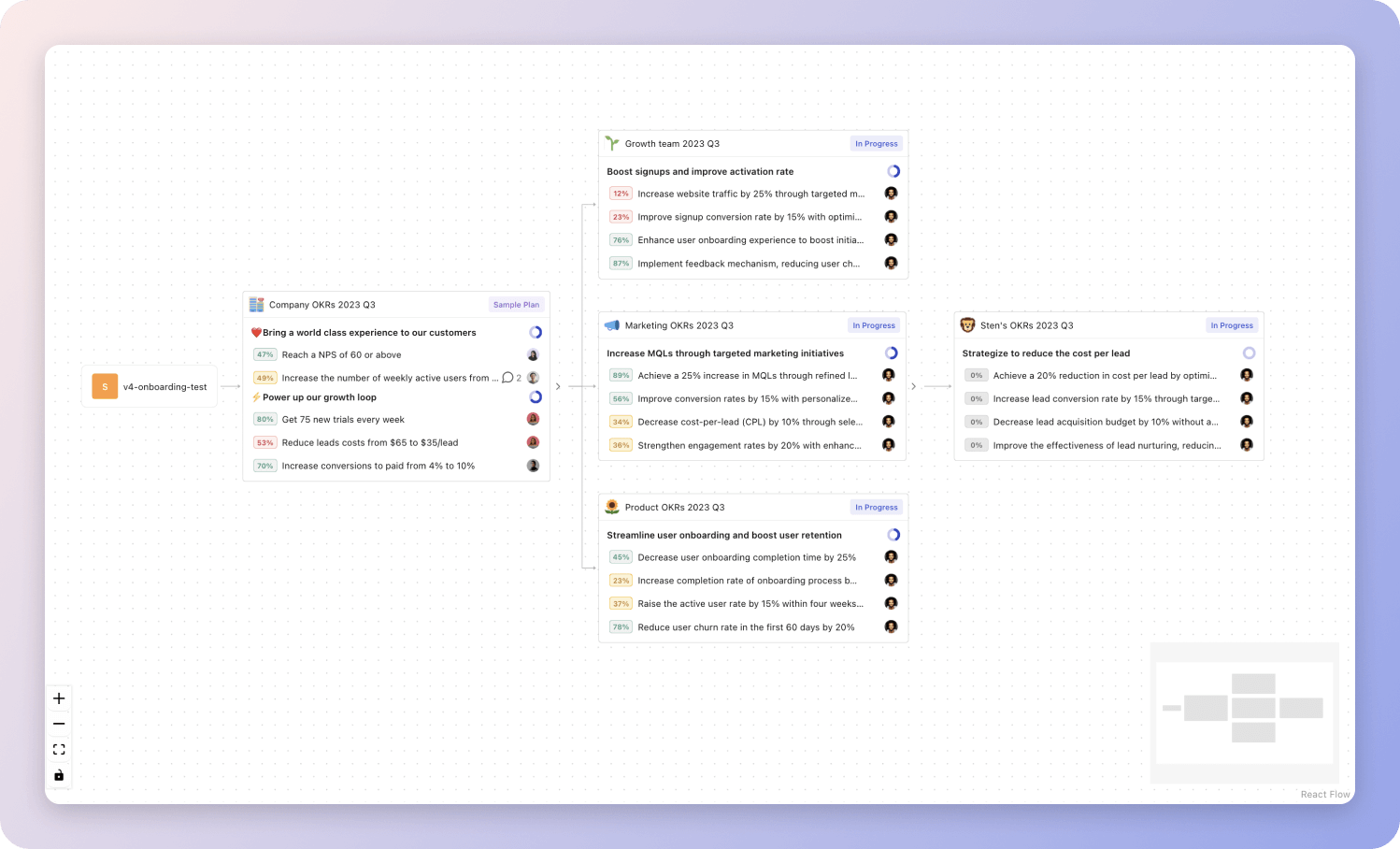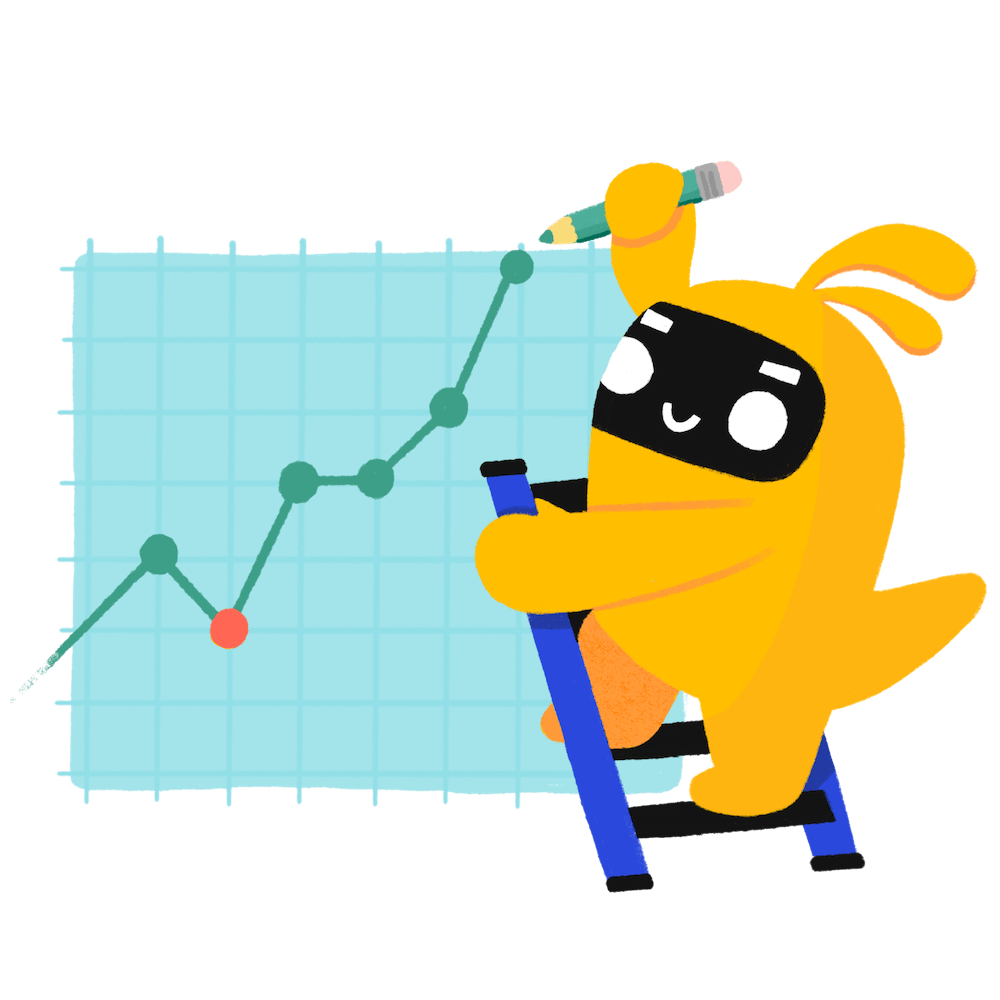3 customisable OKR examples for Engineering Operations Manager
What are Engineering Operations Manager OKRs?
The Objective and Key Results (OKR) framework is a simple goal-setting methodology that was introduced at Intel by Andy Grove in the 70s. It became popular after John Doerr introduced it to Google in the 90s, and it's now used by teams of all sizes to set and track ambitious goals at scale.
OKRs are quickly gaining popularity as a goal-setting framework. But, it's not always easy to know how to write your goals, especially if it's your first time using OKRs.
To aid you in setting your goals, we have compiled a collection of OKR examples customized for Engineering Operations Manager. Take a look at the templates below for inspiration and guidance.
If you want to learn more about the framework, you can read our OKR guide online.
Building your own Engineering Operations Manager OKRs with AI
While we have some examples available, it's likely that you'll have specific scenarios that aren't covered here. You can use our free AI generator below or our more complete goal-setting system to generate your own OKRs.
Feel free to explore our tools:
- Use our free OKR generator
- Use Tability, a complete platform to set and track OKRs and initiatives, including a GPT-4 powered goal generator
Our customisable Engineering Operations Manager OKRs examples
You'll find below a list of Objectives and Key Results templates for Engineering Operations Manager. We also included strategic projects for each template to make it easier to understand the difference between key results and projects.
Hope you'll find this helpful!
1. OKRs to enhance workflow efficiency and productivity
Enhance workflow efficiency and productivity
Implement at least 3 significant improvements identified from the workflow analysis
Develop strategies to implement these improvements efficiently
Evaluate success of implemented improvements periodically
Prioritize the 3 top improvements identified from workflow analysis
Reduce workflow steps or stages by 10% to streamline operations
Implement new workflow and analyze for efficiency improvement
Review and analyze current processes for unnecessary stages
Develop a revised workflow eliminating redundant steps
Increase process efficiency by 20% through process re-engineering
Identify bottlenecks in the current process
Train staff on newly engineered process
Develop a streamlined process blueprint
2. OKRs to achieve optimal efficiency in engineering operations
Achieve optimal efficiency in engineering operations
Lower engineering error rates by 10% through enhanced quality control measures
Regularly monitor and review error reports
Conduct regular training for quality control measures
Implement rigorous testing protocols for every engineering process
Reduce operation downtime by 20% through improved preventative maintenance procedures
Implement strict equipment servicing and inspection schedules
Develop detailed preventative maintenance protocols
Train personnel in efficient troubleshooting techniques
Increase operational efficiency by 15% via process improvement initiatives
Implement new strategies to streamline processes
Regularly assess and adjust improvements for optimal efficiency
Identify inefficiencies in current operational procedures
3. OKRs to improve system availability to achieve 999% uptime
Increase system uptime
Improve system redundancy and failover capabilities
Use load balancing to distribute traffic across multiple servers
Create backup systems in different geographic locations
Regularly test failover and recovery processes
Implement automated failover mechanisms
Implement proactive system monitoring
Regularly review system metrics and identify areas for improvement
Define and create alerts for critical system events
Develop a process for reviewing and responding to alerts
Set up monitoring tools for infrastructure
Increase system performance by 25%
Upgrade hardware and software components as per audit recommendations
Conduct a system audit to identify bottlenecks and inefficient processes
Optimize system settings and configurations to reduce resource consumption
Implement a system monitoring and alert system to minimize downtime
Decrease unplanned downtime by 50%
Conduct regular equipment inspections
Increase spare parts inventory
Improve operator training on equipment maintenance
Implement predictive maintenance program
Engineering Operations Manager OKR best practices to boost success
Generally speaking, your objectives should be ambitious yet achievable, and your key results should be measurable and time-bound (using the SMART framework can be helpful). It is also recommended to list strategic initiatives under your key results, as it'll help you avoid the common mistake of listing projects in your KRs.
Here are a couple of best practices extracted from our OKR implementation guide 👇
Tip #1: Limit the number of key results
The #1 role of OKRs is to help you and your team focus on what really matters. Business-as-usual activities will still be happening, but you do not need to track your entire roadmap in the OKRs.
We recommend having 3-4 objectives, and 3-4 key results per objective. A platform like Tability can run audits on your data to help you identify the plans that have too many goals.
 Tability's audit dashboard will highlight opportunities to improve OKRs
Tability's audit dashboard will highlight opportunities to improve OKRsTip #2: Commit to weekly OKR check-ins
Don't fall into the set-and-forget trap. It is important to adopt a weekly check-in process to get the full value of your OKRs and make your strategy agile – otherwise this is nothing more than a reporting exercise.
Being able to see trends for your key results will also keep yourself honest.
 Tability's check-ins will save you hours and increase transparency
Tability's check-ins will save you hours and increase transparencyTip #3: No more than 2 yellow statuses in a row
Yes, this is another tip for goal-tracking instead of goal-setting (but you'll get plenty of OKR examples above). But, once you have your goals defined, it will be your ability to keep the right sense of urgency that will make the difference.
As a rule of thumb, it's best to avoid having more than 2 yellow/at risk statuses in a row.
Make a call on the 3rd update. You should be either back on track, or off track. This sounds harsh but it's the best way to signal risks early enough to fix things.
How to turn your Engineering Operations Manager OKRs in a strategy map
Your quarterly OKRs should be tracked weekly in order to get all the benefits of the OKRs framework. Reviewing progress periodically has several advantages:
- It brings the goals back to the top of the mind
- It will highlight poorly set OKRs
- It will surface execution risks
- It improves transparency and accountability
Spreadsheets are enough to get started. Then, once you need to scale you can use a proper OKR platform to make things easier.
 Tability's Strategy Map makes it easy to see all your org's OKRs
Tability's Strategy Map makes it easy to see all your org's OKRsIf you're not yet set on a tool, you can check out the 5 best OKR tracking templates guide to find the best way to monitor progress during the quarter.
More Engineering Operations Manager OKR templates
We have more templates to help you draft your team goals and OKRs.
OKRs to enhance service infrastructure to improve customer satisfaction
OKRs to ensure precision in financial statement generation
OKRs to enhance tech lead abilities by utilizing online learning and practical application
OKRs to boost lead generation via organic and paid social media
OKRs to get better user retention
OKRs to achieve MongoDB certification
OKRs resources
Here are a list of resources to help you adopt the Objectives and Key Results framework.
- To learn: What is the meaning of OKRs
- Blog posts: ODT Blog
- Success metrics: KPIs examples
Create more examples in our app
You can use Tability to create OKRs with AI – and keep yourself accountable 👀
Tability is a unique goal-tracking platform built to save hours at work and help teams stay on top of their goals.
 1 Create your workspace
1 Create your workspace 2 Build plans in seconds with AI
2 Build plans in seconds with AI 3Track your progress
3Track your progress